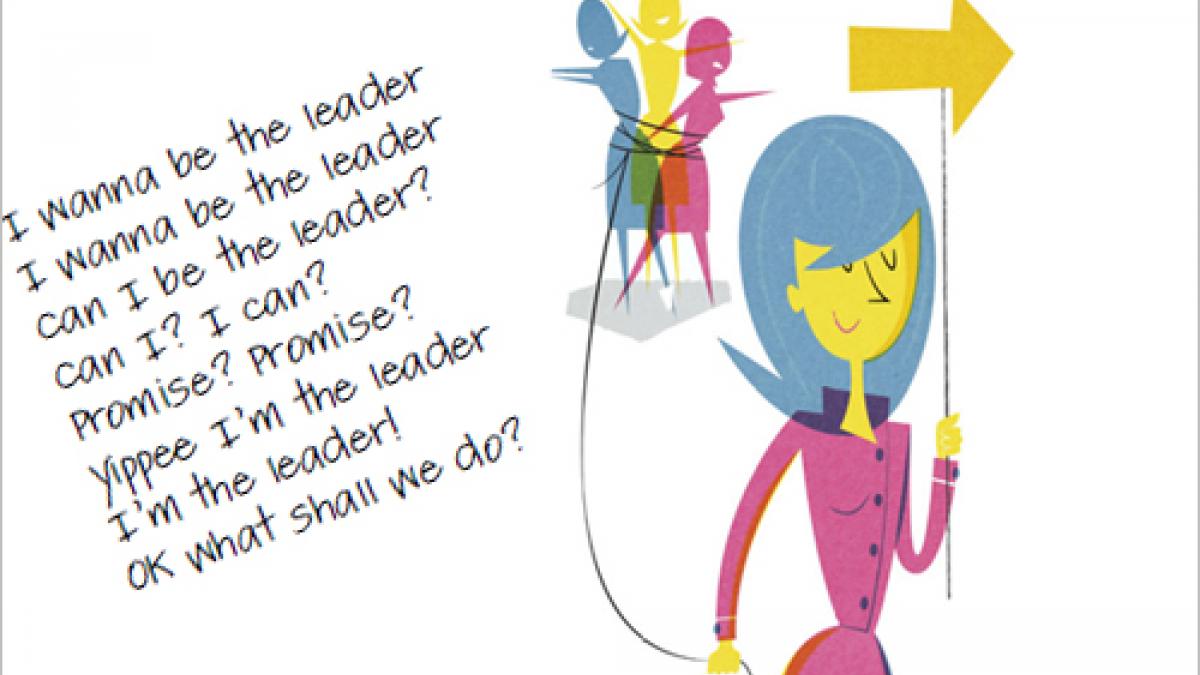In the first of a series, CSP adviser Nina Paterson says leadership is relevant to members at all levels.

You may have noticed quite an emphasis on leadership recently. It was central to Karen Middleton’s 2014 Founders Lecture message, and is the focus of Physiotherapy Works events. It’s also the theme of this issue of Frontline. And there will be more to come throughout 2015.
Leaders can be found at every level. This series is as much for band 2s, students and new graduates as it is for those in management or strategic positions.
This series is designed for you whether your goal is to provide an effective treatment, improve someone’s quality of life, mentor a colleague, be a role model for students on placement, improve the working environment as a steward, shape future professionals as a lecturer, or support CPD as a learning champion.
So welcome to the first in a four-part CPD series on being a leader.
We’ll be looking at a range of interlinked topics:
- self-awareness: confidence, attitudes,
- strengths and weaknesses
- political awareness: understanding others,
- understanding your context, spheres of
- influence, creating a compelling case.
- making it happen: planning, putting it into action, and resilience.
This article looks at the qualities of a leader, motivation and seeing the need.
Values and behaviours
Karen Middleton wrote last June about the difference between leadership and management. If you look at the words she used – ‘vision’ and ‘enabling’ – we’re talking about values and behaviours. Let’s take two minutes to define these.
Choose three leaders from any point in history or walk of life. Jot down qualities that they possess. My list is attached.
Have a look at the values at the heart of the profession (taken from CSP Physiotherapy Framework of behaviours, values, knowledge and skills).
You can find the physiotherapy framework.
You’ll see that altruism, advocacy, compassion and care are integral qualities. Other frameworks, such as the Healthcare Leadership Model, include similar qualities to those defined by the CSP and, I hope, to those on your list. The healthcare leadership model is in the resources section of the NHS Leadership Academy website.
Leaders are called to embody these qualities, as role models. If you are looking at your list and feeling daunted, that’s okay. If you are looking to develop, find a mentor who embodies the qualities you’ve identified as a valuable way to grow.
There are a number of leadership programmes available, suitable for all levels. If you can’t access these or find a mentor, you can learn from reading books on leadership, or biographies and autobiographies. Don’t limit yourself to health and social care: just look for someone who exemplifies the qualities on your list.
Drive and motivation
Even if your choice of leaders is very different from mine, they’d have something in common: drive, self-confidence (we’ll look at this in the next CPD article) and motivation to achieve their goals.
Go back to your names and think about their motives. I hope you can see another common thread: a belief that what they set out to achieve would benefit others.
NHS Scotland’s 2020 Workforce vision states that leaders are ‘an integral part of improving quality to enhance patient safety and people’s experience of services’. For NHS England, leading is all about ‘putting the patient first’. The CSP Framework talks about altruism, care and compassion.
However, these values remain words/expressions if they don’t move you to action. You need the belief that what you are doing is right, important and necessary, particularly if you’re trying to do something new or challenge the status quo.
So forget the lists and the statements. What motivates you?
Seeing the need
Before we wrap up this article, we need to do some preparation for the rest of the series. Leading isn’t about a title or job description. You lead because you see a need that you can’t ignore, so you do something about it. I heard a poem years ago by Roger McGough called ‘The leader’ that illustrates this point.
It goes like this…
I wanna be the leader
I wanna be the leader
Can I be the leader?
Can I? I can?
Promise? Promise?
Yippee I’m the leader
I’m the leader!
OK what shall we do?
What need do you see? What do you want to inspire others to do or be? What do you want to change?Make a note of what you want to achieve. Now take some time to think about why it is important – what’s motivating you?
The prompts below are just suggestions.
- Why does this matter to you?
- What will the benefits be?
- What values affect your perspective?
- How will your changes make a difference?
- What will be the implications if things stay the same?
The next question is: what do you need to do to achieve your goal? But this is where we’ll pick up next time in the CPD series. fl
Nina’s leaders and their qualities
- Nelson Mandela
- Rosalind Paget
- Emmeline Pankhurst
Inspiring, confident, brave, proactive, undaunted in face of setbacks, political, visionary, daring to change their world, revolutionary, committed, organised, tactical, made personal commitment/sacrifice for the benefit of others, had self-belief, deep compassion, integrity.
Author
Nina Paterson
Number of subscribers: 3




































